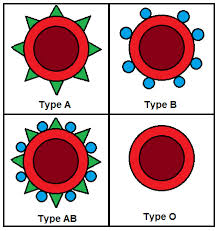Last Sin! The Type A Syndrome
Casco Viejo Panama Casco Antiguo
The first time I heard the “I`m a Type A” phrase, was from a New Yorker. I thought he was talking about blood types, and it did take some time to my friend to be able to describe it to me. Please note: description (even a full description which included hand signals) does not ensure comprehension. I felt like all of a sudden we were both using the same language but absolutely worlds apart. Pluto and Saturn colliding, no wonder: he was from New York, I`m from Panama. My brain squeezed while my whole being was like… what?
After researching about “Type A” in Wikipedia, there are a lot of characteristics to it, very few “tropical”, so to speak. And here is the challenge: how to be enough type A so that you move forward, but enough type whatever else, enough to know how to navigate these waters. It is not easy and this, above all, is the main sin many commit.
I guess the best way we`ve come up in order to describe it is like this: basically you are running inside a pool full of water. This is the surest way to burn out and not get anywhere. You need to swim. How? that`s the trick, the art. You have to slow down your revolutions in order to catch the rhythm, understand the why`s and the style. Once you do, then you can input. But if you do it in reverse, your “type A glasses” won´t allow you to see reality and people who you will depend to in order to get things done will perceive you as arrogant and difficult.
An example I like about this, which embodies everything I`ve been posting about in the last week is this (true story!): a friend who took on the titanic job of finishing a building that was not his project to begin with, came in and took the following approach with a problem. The wood floors were not being installed right. He himself knew how to do it (experience), and his type A personality knew he couldn´t let this just “go”. He didn´t speak enough Spanish to communicate, but he was very committed to this project (acedia vs bonding). So, he decided to show up one morning, earlier than anyone, and started installing it himself. The wood guy came in and saw him. Very surprised, he started watching and my friend looked at him with a smile and said: do you like how this looks? The guy actually did like it, but what was more important, was actually key is that he liked that the “owner” of the project demonstrated to be a humble person (vs what he had experienced before), willing to get dirty with the work himself, and with a smile. And, although the technique was new to him (which always, always, always, causes tons of friction) the approach was the right one for the occasion and the level. The guy learned it side by side with the owner of the project, learned there are human beings on both sides of the paycheck, that someone really cared, and actually… that the technique happened to be faster and better.
In return, you will learn that a number of things you know work around the world, are difficult to implement here (weather, materials or needs special training), although not all. Or you will learn that listening to the building vs imposing is the best you can do (see: a cold heart). Sometimes, when “hitting the ground running” you don´t see it, leading you to expensive mistakes.
All of this requires tuning in, eyes and ears wide open, but also a humble heart. The good news is, after all this effort, buildings built on a humble heart come out and show beautifully.
There is nothing that brings us more pleasure than seeing someone be successful at restoring a building. The advice in this series have been compiled through the experiences of a number of buildings and owners earning their badges (or not!), and while they make seem like common sense, do not dismiss them when approaching your own project. As they say, you can learn from someone telling you how to swing a cat by the tail, but only when you try swinging one yourself is when the advice you heard makes sense!
So… Happy swinging! Miau!

